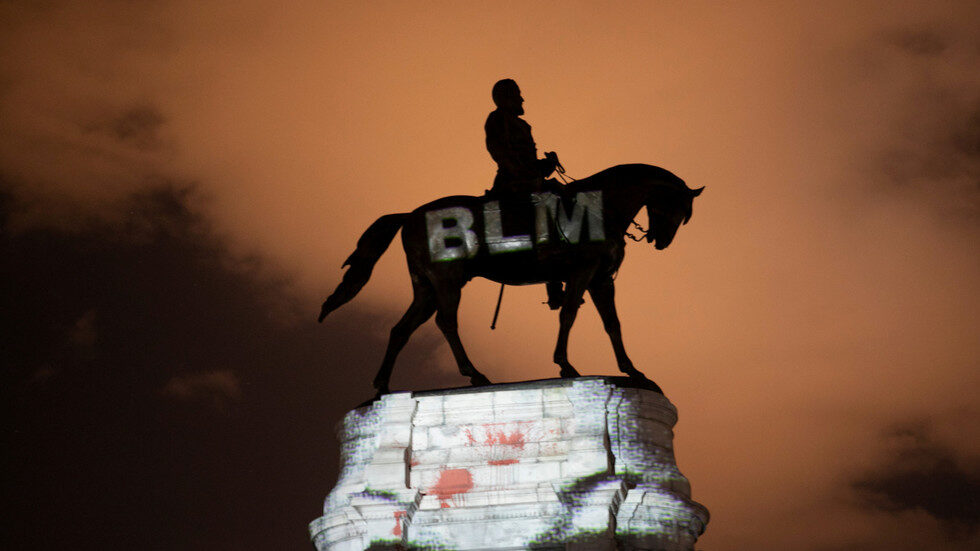The outlet posted the video, titled "How to take down racist statues," on Wednesday, apparently deciding at some point to rename it "How to *hypothetically* take down a racist statue" - perhaps on the advice of its lawyers. The clip features advice from archaeologist Sarah Parcak, whose detailed "public service announcement" on how to "safely" take down obelisks went viral earlier this month.
Comment: Who would've guessed this would be the face of the new totalitarianism?
Explaining that "a lot of historical figures, regardless of their legacy, were pretty damn racist," Mashable reporter Morgan Sung winkingly praises rioters who - apparently unable to convince their city councils to remove "racist" statues - "[took] matters into their own hands" and brought down the offending monuments themselves.
"Obviously, we're not telling you to commit any crimes, and we also can't tell you to deface any property," Sung says, smirking. "But we thought it would be interesting to look at a purely hypothetical way to safely remove a statue."
Comment: Still waiting on the videos on how to safely throw Molotov cocktails at cops and local businesses...
Mashable illustrates Parcak's statue-toppling tutorial with whimsical graphics, upbeat music, and inspirational phrases. "It's like a game of revolutionary tug-of-war!" she gushes, while parroting Parcak's advice to "use a really upbeat song" to accompany one's act of historical vandalism. And, like Parcak, who followed up her viral tweets with a much-less-viral disclaimer, calling her prior posts "entirely hypothetical" and urging readers not to pull down the Washington Monument, Sung papers over the unavoidably criminal (and frankly dangerous) nature of the acts she describes with tongue-in-cheek escape clauses.
"You really don't want to be underneath a toppling statue," Sung stresses, casually mentioning the protester in Portsmouth, Virginia, who was "gravely injured" when part of a Confederate statue fell on his head earlier this month. Chris Green, a young black father of two, apparently spent his last conscious moments trying to herd fellow protesters out of the way of the toppling statue, only to nearly be killed by it himself, flatlining twice in the ambulance, according to his wife. Since angry mobs rarely attack statues with safety foremost in their minds, future assaults on these inanimate oppressors are more likely to resemble the melee that almost killed Green than the carefully plotted procedure set out by Parcak. As the energy of nearly a month of protesting against racism and police brutality is increasingly reoriented toward a vaguer concept of "systemic racism" and abolishing the police entirely, it's clear the iconoclasts are just getting warmed up.
As for "all those people who believe that destroying statues also destroys history" - represented in the clip by a lonely-looking trio of beefy white people clad in stereotypical redneck attire - well, they aren't archaeologists, so what do they know? If these statues "signify white supremacy, and nothing else," as Parcak claims they do, they belong in museums, where the proper historical context can be provided.
Comment: Apparently you can become an archaeologist without having a brain. Good to know.
Putting a museum-type plaque next to the statue in situ is apparently not an appropriate compromise, but knocking it over is. Who knew?
Sung concludes the video with a grinning directive: "Start those petitions and get them to your city council. But if all else fails, bottoms up, baby!" Presumably, the viewer has already read Vice.com's handy guide to finding their nearest "racist" monument, bookmarked the Southern Poverty Law Center's map, and embarked on the road to becoming a real, live historical vandal.
But - experts say - that's progress. According to Parcak, this is "the beginning of a more inclusive and welcoming version of America." And who could stand against that? Aside from a statue that really needs toppling, that is.




Reader Comments